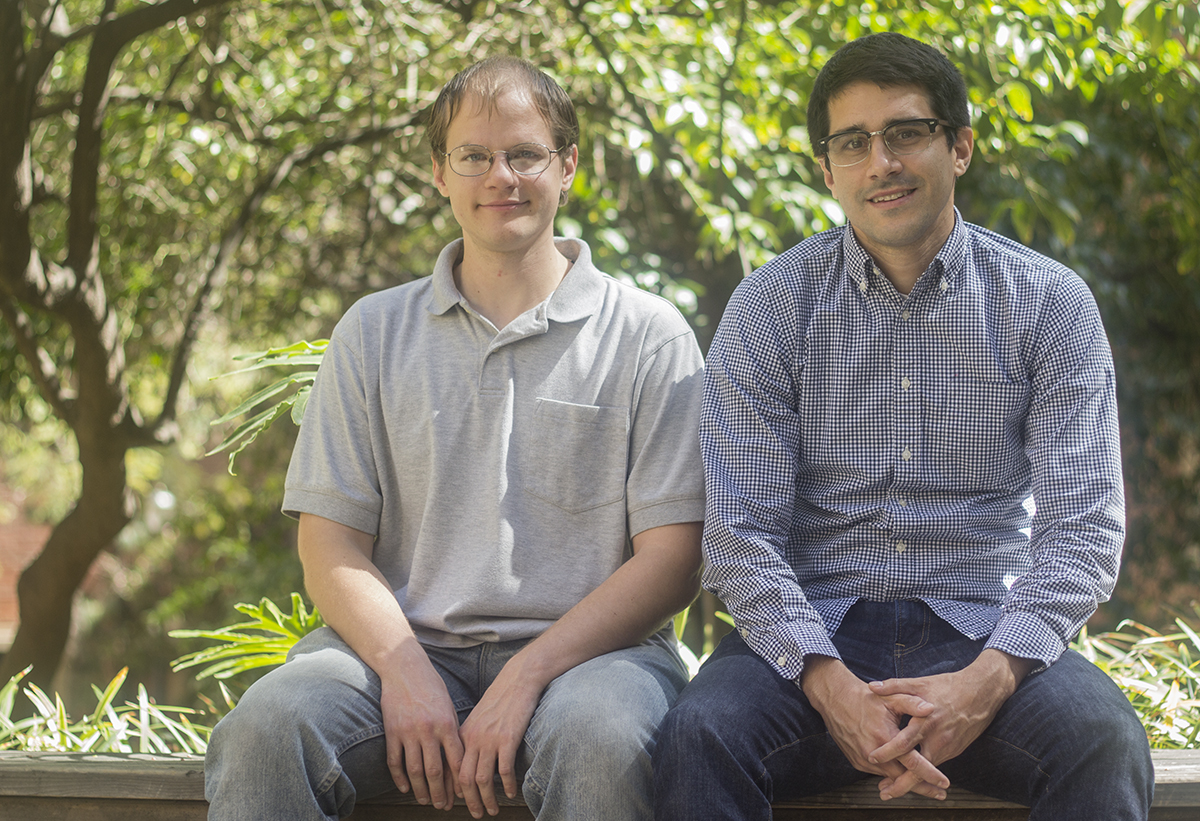UCLA connections contribute to winter wonderland of ‘Frozen’

Joseph Teran and Craig Schroeder are UCLA mathematicians who helped animate snow in Disney’s “Frozen.” (Felicia Ramirez/Daily Bruin staff)
By Angela Cosme
March 18, 2014 1:33 a.m.
It’s difficult to make the complex texture of snow appear in animated form. One wrong step could make it look like icy slush or mashed potatoes.
UCLA mathematicians Joseph Teran and Craig Schroeder experienced this tricky balancing act when writing the algorithm to animate the snow in Disney’s Academy Award-winning movie “Frozen.”
“You watch things like water all your life. So if it is simulated with even a slight error, you can tell right away,” Schroeder said.
The UCLA mathematics professors and some of their colleagues modified a preexisting mathematical method so that Disney animators could use it on large-scale snow dynamics.
“You just need to use the governing physics to make it look best,”Teran said.
Although Disney had simulations for several other elements when they were planning the movie “Frozen,” they did not have a way of animating snow, said Teran, who has consulted on visual effects for Disney for more than six years.
Snow’s behavior is difficult to capture in animation because of its versatility as both a solid and liquid, said Alexey Stomakhin, a Disney software engineer and UCLA alumnus.
The UCLA professors animated the elements by mathematically modeling the snow based on the tendencies of individual particles, Teran said.
Teran said he and his colleagues hit a bump when testing their mathematical model on how a snowball would behave when rolling down a hill. Snowballs rolled down hills gain size in a loose wrapping fashion, like a growing snail shell. While Teran said he believed they should not pull up sheets of powder and appear more gradual and spherical in growth, Stomakhin, who grew up in Russia playing in the snow, said he thought the simulation was spot on.
Stomakhin said, “We ended up taking an impromptu ski trip to Lake Tahoe and taking video reference of snowballing.”
The trio wrote a paper on their research with two other co-authors, which took about three months to publish and three months to integrate into Disney’s production pipeline, said Stomakhin, who translated their findings into usable animation software.
Despite the prevalence of rendered snow, the final program that incorporated the algorithm was much quicker and easier to implement than solutions to past problems on other films, Teran said. Creating a solution to fracturing roads due to supersonic dog barks in the movie “Bolt” took him a bit longer.
Stomakhin said he animated several shots that are featured in the final cut of Frozen. One such scene is when the character Kristoff jumps from one cliff to another after his sleigh is chased by wolves.
Teran said that he enjoys studying the various lesser-known applications of mathematics, such as visual effects, and virtual surgery was his initial focus out of graduate school.
“I worked in something completely unrelated after graduate school, but then I saw ‘Tangled’ and was impressed with the animation,” Stomakhin said. “I found some papers on the math behind it and then decided, ‘This is what I want to do.’”
Schroeder said he feels that simulations in animation are important in general because computers are cheaper than people. An artist takes longer to work, makes more errors and has more difficulty correcting mistakes. Simply tweaking the parameters of the program can do any alterations that need to be made, Schroeder said.
“It is always nice to see the results of your work on big screen,” Stomakhin said. “That’s one of the things I like about my job.”


